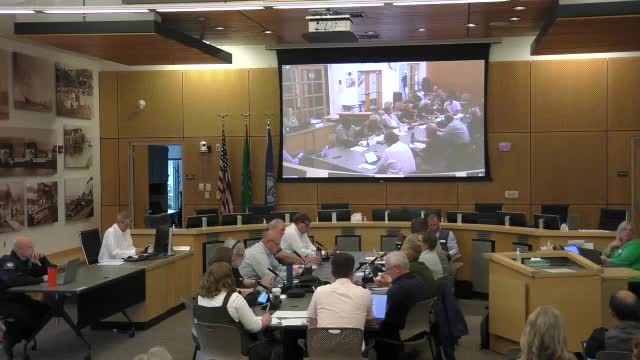Data reveals racial income disparities prompting call for bias training
August 26, 2024 | Mukilteo, Snohomish County, Washington
This article was created by AI summarizing key points discussed. AI makes mistakes, so for full details and context, please refer to the video of the full meeting. Please report any errors so we can fix them. Report an error »

In a recent government meeting, discussions centered around income distribution among racial groups in Mukilteo revealed significant disparities and raised concerns about implicit bias in data interpretation. The analysis highlighted that Hispanic or Latino income earners in the area are evenly spread across various income categories, while Black or African American residents predominantly fall into the extremely low and above median income brackets, with minimal representation in the middle categories.
Data presented indicated that only 9% of Black income earners fall into the extremely low income category, with 79% classified as above median income. This contrasts with the characterization of clustering in the extremely low and above median categories, which one official contested as misleading. The breakdown for White income earners showed a skew towards above median incomes, with 65% in that category.
The discussion emphasized the need for a more accurate representation of the data, suggesting that the current descriptions may reflect implicit bias. Officials proposed that this situation presents a valuable opportunity for Diversity, Equity, and Inclusion (DEI) training for staff and elected officials. A request was made for budget allocations to support implicit bias training, aiming to enhance understanding and improve data presentation in future reports.
The meeting underscored the importance of accurate data interpretation and the potential benefits of training to address biases, fostering a more equitable approach to income analysis in the community.
Data presented indicated that only 9% of Black income earners fall into the extremely low income category, with 79% classified as above median income. This contrasts with the characterization of clustering in the extremely low and above median categories, which one official contested as misleading. The breakdown for White income earners showed a skew towards above median incomes, with 65% in that category.
The discussion emphasized the need for a more accurate representation of the data, suggesting that the current descriptions may reflect implicit bias. Officials proposed that this situation presents a valuable opportunity for Diversity, Equity, and Inclusion (DEI) training for staff and elected officials. A request was made for budget allocations to support implicit bias training, aiming to enhance understanding and improve data presentation in future reports.
The meeting underscored the importance of accurate data interpretation and the potential benefits of training to address biases, fostering a more equitable approach to income analysis in the community.
View full meeting
This article is based on a recent meeting—watch the full video and explore the complete transcript for deeper insights into the discussion.
View full meeting
